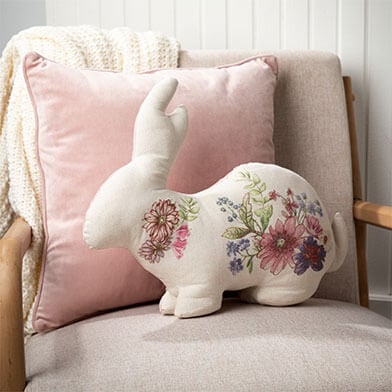The home decor industry is currently experiencing an exciting evolution. Traditional tradeshows, typically the first choice for retailers, are finding a digital option in virtual markets and showrooms. These digital platforms offer innovative ways to explore and purchase products. If time, staffing, or budgetary concerns restrict your ability to attend physical markets, virtual showrooms could be the perfect fit. As someone who’s been on the ground floor of this transition, I’m excited to share insights to help independent retailers adapt to this new digital option.
Benefits of Virtual Markets and Showrooms
Virtual markets come with an array of benefits. First, when shopping from a virtual showroom, the hassle and expense of traveling to tradeshows are eliminated, freeing up resources so retailers can spend more time and money on products. Retailers can explore new collections at their convenience, away from the crowded halls of trade shows, allowing them to really focus on the products they’d like to buy.
It’s important to note that the bond with your sales rep isn’t lost – remote personal shopping is an important aspect of virtual markets. Sales reps, who will attend the in-person shows, can share their first-hand experience with new products, or even video chat with you directly from the showrooms. Sales reps have found virtual platforms to be as effective as physical tradeshows in terms of customer service. They’re able to guide customers through the entire showroom or virtual market via video calls, providing real-time assistance and enhancing the customer’s buying experience.
Virtual showrooms also allow retailers to make more accurate purchasing decisions. While shopping in a virtual market, you can review your store’s inventory without leaving home! Virtual markets offer the chance to take the status of your inventory in real-time, enabling you to make informed decisions and avoid out-of-stock disappointments. One retailer told us that by placing an order while standing in his store, with access to real-time inventory, he was able to avoid duplications and ensure he had a cohesive product offering.
Virtual showrooms also present a significant time-saving advantage. Physical tradeshows might require 3-5 days of travel, attendance, and browsing, but retailers can purchase the same amount of product in just a matter of hours through virtual platforms, without sacrificing valuable time in-store.
Yet another retailer shared his experience of balancing store operations while attending a virtual market. He found this digital transition eased his operational stress, and he was able to smoothly continue running his store while sourcing new products.
Moreover, virtual showrooms also serve as excellent planning tools for physical tradeshows. Retailers have found that browsing virtual markets ahead of their trips to traditional showrooms can help them prepare more effectively, identify key items they’re interested in, and prioritize their visits. This synergy between virtual and physical experiences ensures a more focused and efficient buying process.
The Virtual Market Experience
Virtual showrooms offer a unique, comprehensive experience. While they differ from traditional tradeshows, they strive to maintain the effectiveness and engagement of the physical experience. Though some virtual showrooms provide a 3D walkthrough, the real value lies in the interactive features they offer. A sales rep can guide you through the products via video calls, and you can add products to your order in real time, making your shopping experience productive and efficient. The experience of a tradeshow is replicated, not through physical space, but through interactive technology.
Even though virtual markets emerged as a result of the pandemic, they are definitely here to stay. They offer a year-round trade show experience, without geographical or time constraints. They represent an evolution in the way we conduct business, allowing more retailers to connect with wholesalers, regardless of their location and schedules.
Addressing the Learning Curve
Venturing into a virtual showroom requires no special skills. All you need is a computer or tablet/smartphone and a reliable internet connection. When browsing a virtual market, take advantage of filters and other navigational options to narrow down the categories or styles you are looking for. Additionally, video “how-tos” are typically available to offer more information. For example, Sullivans provides short clips about product trends, consumer insights, and how-to resources to help you create designs. Using these technological tools can help you make more informed and effective buying decisions.
Advice to Retailers
If you’re considering the shift to virtual showrooms, keep an open mind. Utilize the available tools to your advantage, and remember, your sales rep is still there to assist you. Even if you plan to attend a physical tradeshow, visit your favorite wholesalers’ digital markets to help you prepare. (Some companies, like Sullivans, even offer special discounts for pre-market orders!) Plus, when using virtual market tools to plan your in-person experience, you’ll likely end up with a more cohesive plan that will help you avoid duplicating your existing inventory and help stretch your budget.
While virtual markets offer new and efficient ways to shop, traditional trade markets continue to hold value. Embrace the future but remember the strength of the past. Whether it’s through the hustle and bustle of trade shows, personal encounters on the road, the convenience of vendors’ websites, or the interactive experience of virtual markets, retailers have more options than ever to facilitate their buying process and continue to thrive in business.
Here’s to a bright, prosperous future in home décor, blending the best of traditional and digital marketplaces.






















